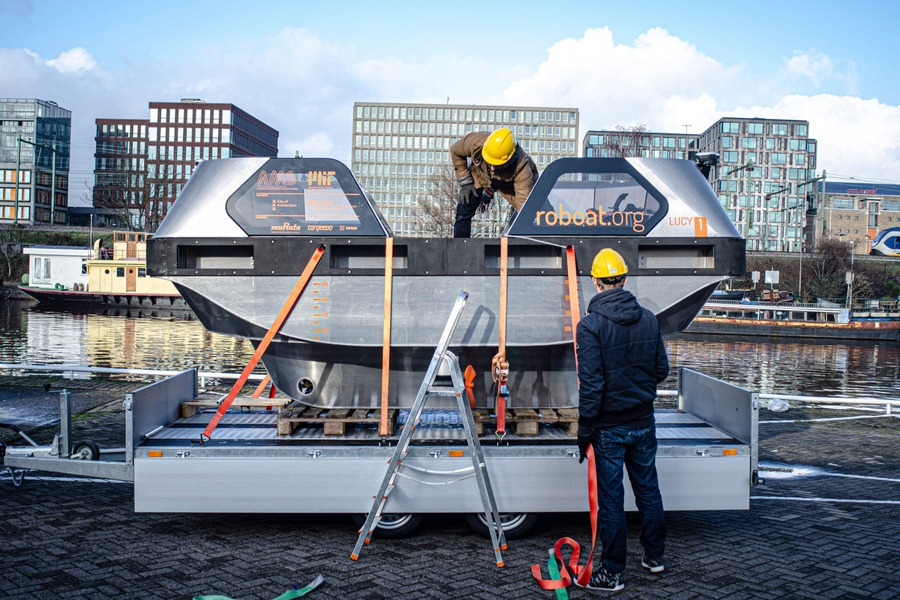Self-driving Roboats, developed at MIT, set sea in Amsterdam canals
29. 10. 2021 | MIT | www.mit.edu
Scientists from MIT’s Computer Science and Artificial Intelligence Laboratory (CSAIL) and the Senseable City Laboratory, together with Amsterdam Institute for Advanced Metropolitan Solutions (AMS Institute) in the Netherlands, have now created the final project in their self-navigating trilogy: a full-scale, fully autonomous robotic boat that’s ready to be deployed along the canals of Amsterdam.
“Roboat” has come a long way since the team first started prototyping small vessels in the MIT pool in late 2015. Last year, the team released their half-scale, medium model that was 2 meters long and demonstrated promising navigational prowess. This year, two full-scale Roboats were launched, proving more than just proof-of-concept: these craft can comfortably carry up to five people, collect waste, deliver goods, and provide on-demand infrastructure.

The boat looks futuristic — it’s a sleek combination of black and gray with two seats that face each other, with orange block letters on the sides that illustrate the makers' namesakes. It’s a fully electrical boat with a battery that’s the size of a small chest, enabling up to 10 hours of operation and wireless charging capabilities. To swiftly navigate the bustling waters of Amsterdam, Roboat needs a meticulous fusion of proper navigation, perception, and control software. Using GPS, the boat autonomously decides on a safe route from A to B, while continuously scanning the environment to avoid collisions with objects, such as bridges, pillars, and other boats. To autonomously determine a free path and avoid crashing into objects, Roboat uses lidar and a number of cameras to enable a 360-degree view.
Read more at MIT
Image Credit: MIT CSAIL
-jk-




